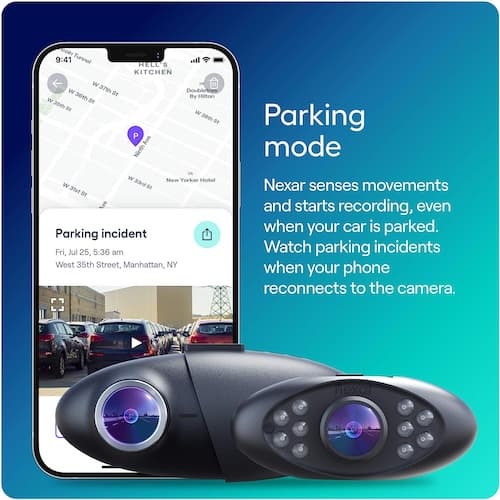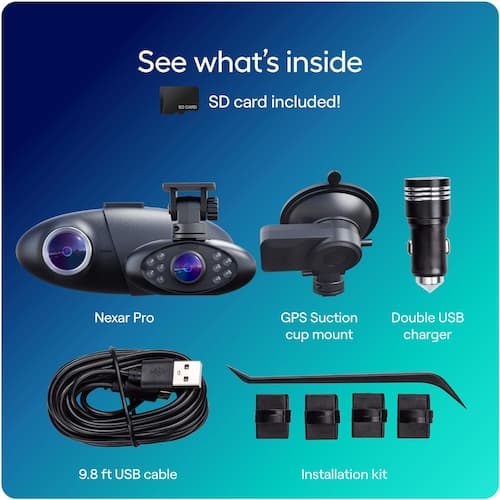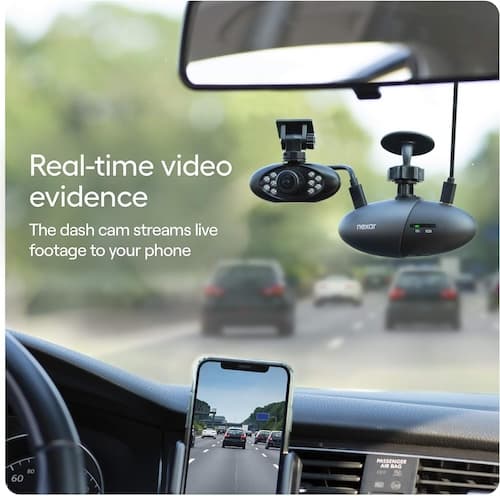When it comes to driving, safety should always be a top priority. One way to ensure safety on the road is by installing a dash cam in your vehicle. Dash cams are becoming increasingly popular among drivers, as they provide a record of what happens on the road in case of an accident or other incident. However, knowing where to mount dash cam can be a challenge.
The first step in mounting a dash cam is to choose the right location. So where is the best place to mount a dash cam. The most common spot is on the windshield, behind the rearview mirror. This location provides an unobstructed view of the road ahead, while also keeping the camera out of the driver’s line of sight. However, some drivers prefer to mount their dash cam on the dashboard or even on the rear window. Each location has its own benefits and drawbacks, and it ultimately depends on the driver’s personal preference and the type of dash cam being used.
It’s important to note that some states have laws regulating where dash cams can be mounted. For example, in California, dash cams must be mounted in a way that does not obstruct the driver’s view of the road. It’s crucial to research the laws in your state before installing a dash cam. With the right location and knowledge of the laws, mounting a dash cam can provide peace of mind while on the road.

Choosing the Right Mount
When it comes to mounting your dash cam, choosing the right mount is crucial. The mount you choose will determine how securely your dash cam is attached to your windshield or dashboard, and how well it will stay in place while you’re driving.
There are two main types of mounts to consider: suction mounts and adhesive mounts.
Suction Mounts
Suction mounts use a suction cup to attach your dash cam to your windshield. They are easy to install and remove, and they can be adjusted to different angles and positions. Suction mounts are a good choice if you want to move your dash cam between different vehicles, or if you want to remove it when you’re not driving.
However, suction mounts may not be as stable as adhesive mounts. They can come loose if the suction cup loses its grip, and they may not work as well in extreme temperatures or on textured surfaces.
Adhesive Mounts
Adhesive mounts use a sticky pad to attach your dash cam to your dashboard or windshield. They are more stable than suction mounts, and they can withstand extreme temperatures and rough roads. Adhesive mounts are a good choice if you want a more permanent installation, or if you want to avoid the hassle of removing and reattaching your dash cam.
However, adhesive mounts can be difficult to remove, and they may leave residue on your windshield or dashboard. They also may not be as adjustable as suction mounts.
When choosing a mount for your dash cam, consider the type of dash cam you have and the type of vehicle you’re driving. Some types of dash cam mounts are designed specifically for certain models of dash cams or certain types of vehicles. Make sure you choose a mount that is compatible with your dash cam and your vehicle.
Overall, both suction mounts and adhesive mounts can be effective mounting solutions for your dash cam. It’s up to you to decide which one is right for you based on your needs and preferences.
Dash Cam Mounting Locations
When it comes to mounting a dash cam, the placement of the camera is just as important as the camera itself. Here are some of the most common locations to mount a dash cam:
Windshield Placement
Mounting a dash cam on the windshield is the most common location. The camera is usually placed in the center of the windshield, just below the rearview mirror. This placement allows for a clear view of the road ahead, but it can also obstruct the driver’s view if the camera is too large or placed too low.
Dashboard Placement
Mounting a dash cam on the dashboard is another option. This placement allows for a lower profile and less obstruction of the driver’s view. However, the camera’s field of view may be limited and it may not capture as much of the road ahead.
Rearview Mirror Area
Mounting a dash cam in the rearview mirror area is becoming more popular. This placement allows for a discreet and low profile installation, while still providing a clear view of the road ahead. However, the camera’s viewing angle may be limited and it may not capture as much of the road as a windshield-mounted camera.
When choosing a location for a dash cam, it is important to consider the camera’s field of view and viewing angle. The camera should be placed in a location that provides a clear view of the road ahead and does not obstruct the driver’s view. Additionally, the camera should be mounted level to ensure accurate footage.
Overall, the best location for a dash cam will vary depending on the vehicle and the driver’s preferences. It is important to choose a location that provides the best field of view and does not obstruct the driver’s view.

Installation Process
Once you have selected the ideal location for your dash cam, it’s time to install it. The installation process involves securing the dash cam, managing the cables, and connecting it to a power source.
Securing the Dash Cam
To mount the dash cam, first, clean the surface where you want to place it using a microfiber cloth. Then, use the adhesive tape provided with the dash cam to attach it to the windshield. Alternatively, you can use a suction cup mount to attach it to the windshield.
Cable Management
To prevent the cables from dangling and obstructing your view, it’s essential to manage them properly. Tuck the cables behind the headliner or the A-pillar trim and run them along the edge of the windshield. You can also use cable clips to hold the cables in place.
Connecting to Power Source
Most dash cams come with a cigarette lighter adapter that plugs into the car’s auxiliary port. Simply plug the adapter into the port and connect the dash cam to it. However, if you want a neater look, you can hard-wire the dash cam to the car’s electrical system using a wiring harness.
Before connecting the dash cam to the power source, make sure to check the user manual for the recommended voltage and amperage. Also, ensure that the dash cam turns on and off automatically with the car’s ignition.
By following these simple steps, you can install your dash cam quickly and easily.
Optimizing the Camera Angle
When it comes to mounting a dash cam, getting the right camera angle is crucial for capturing clear footage. In this section, we will discuss how to optimize the camera angle for the best results.
Adjusting for Clear View
One of the most important factors to consider when mounting a dash cam is ensuring a clear view of the road ahead. The camera should be positioned in a way that minimizes obstructions and maximizes the line of sight. This means avoiding mounting the camera behind tinted windows, windshield wipers, or other objects that may obstruct the view.
Additionally, it is important to position the camera at the right height. Mounting the camera too high or too low can result in an obstructed view or distorted perspective. The camera should be mounted at a height that provides a clear view of the road ahead, without any obstructions.
Ensuring a Wide Field of View
Another important factor to consider when mounting a dash cam is the field of view. The camera should be positioned in a way that captures a wide field of view, to ensure that all important details are captured on camera. This means positioning the camera in a way that captures both the road ahead and the surrounding environment.
To achieve a wide field of view, it is important to choose a camera with a wide-angle lens. This will allow the camera to capture a wider area, without sacrificing image quality. Additionally, the camera should be mounted at a height that provides a clear view of the road ahead, without any obstructions.
In conclusion, optimizing the camera angle is crucial for capturing clear footage with a dash cam. By adjusting for a clear view and ensuring a wide field of view, drivers can capture important details and protect themselves in the event of an accident.
Legal Considerations
Compliance with Local Laws
Before mounting a dash cam, it is important to ensure that it complies with local laws. Laws regarding dash cams vary by country and even by state or province. In some places, it is illegal to mount a dash cam on the windshield or obstruct the driver’s view in any way. In other places, it is only legal to mount a dash cam in certain locations on the windshield or dashboard.
It is recommended to research and understand the local laws regarding dash cams before installing one. This can be done by consulting with local law enforcement or checking the government websites. Failure to comply with local laws can result in fines or even legal trouble.
Avoiding Obstructions
Another important consideration when mounting a dash cam is to avoid obstructing the driver’s view. The dash cam should not be mounted in a location that blocks the driver’s view of the road or any important information such as the speedometer or warning lights.
Additionally, the dash cam should not obstruct the windshield wiper area or be mounted behind any tint or sunshade that may impede the driver’s vision. It is also important to ensure that the dash cam does not interfere with any airbags or other safety features in the vehicle.
Overall, it is important to carefully consider the legal and safety implications of mounting a dash cam before installation. By complying with local laws and avoiding obstructions, drivers can ensure that their dash cam enhances their safety and security on the road.

Maintenance and Troubleshooting
Dash Cam Removal
Removing a dash cam from your vehicle can be a simple process, but it is important to do it correctly to avoid damaging your car or the camera itself. The first step is to disconnect the power source and any cables attached to the camera. Next, gently remove the adhesive pad from the windshield or dashboard. If the pad is difficult to remove, try using a hair dryer to soften the adhesive before peeling it off. Be careful not to damage the surface of your car or the camera lens.
Addressing Technical Issues
If you experience any technical issues with your dash cam, there are a few troubleshooting steps you can take before seeking professional help. First, check the power source and make sure it is securely connected. If the camera is still not turning on, try resetting it by pressing the reset button or disconnecting and reconnecting the power source. If the camera is recording but the footage is blurry or distorted, make sure the lens is clean and free of debris. If you are still experiencing issues, consult the user manual or contact the manufacturer for assistance.
It is important to regularly maintain your dash cam to ensure it is functioning properly. This includes cleaning the lens and checking the power source and cables. Additionally, it is important to use discretion when sharing footage of incidents captured by your dash cam. Be mindful of privacy concerns and only share footage if it is necessary for legal or insurance purposes.
Enhancing Dash Cam Functionality
Dash cams are an essential tool for any driver who wants to protect themselves in the event of an accident. However, there are ways to enhance the functionality of your dash cam beyond just recording video. In this section, we will explore two ways to maximize the features of your dash cam: utilizing GPS and Wi-Fi and maximizing video quality.
Utilizing GPS and Wi-Fi
Many dash cams come equipped with GPS and Wi-Fi capabilities, which can greatly enhance their functionality. GPS allows the dash cam to record the exact location and speed of your vehicle, which can be useful in the event of an accident or traffic violation. Wi-Fi allows you to connect your dash cam to your smartphone or other device, giving you the ability to view and download footage on the go.
By utilizing GPS and Wi-Fi, you can also take advantage of features such as geotagging, which allows you to mark the location of important events, and real-time monitoring, which lets you keep an eye on your vehicle from a remote location.
Maximizing Video Quality
Video quality is a crucial aspect of any dash cam, as it can make the difference between a useful recording and a useless one. To maximize video quality, there are a few key factors to consider:
- Resolution: The higher the resolution, the clearer the image. Look for a dash cam with at least 1080p resolution, or even 4K if you want the highest quality footage.
- Frame rate: A higher frame rate means smoother video. Look for a dash cam with at least 30 frames per second (fps), or even 60fps if you want the smoothest footage.
- Sensors: Some dash cams come equipped with sensors that automatically adjust the exposure and white balance to ensure the best possible image quality in any lighting conditions.
Another important factor to consider is loop recording, which automatically overwrites old footage with new footage once the SD card is full. Make sure to choose a dash cam with a large enough SD card or microSD card to accommodate your needs.
By utilizing GPS and Wi-Fi and maximizing video quality, you can greatly enhance the functionality of your dash cam and ensure that you have the best possible protection on the road. You can check out our Nexar dash cam review if you want to invest in a great dash cam. You can buy your dash cam from Amazon.com
Conclusion on Where to Mount Dash Cam
In conclusion, proper placement of a dash cam is crucial for ensuring road safety and capturing clear footage in the event of an accident or other incident.
When mounting a dash cam, it is important to consider the legal regulations in your area and choose a location that provides an unobstructed view of the road. Whether using a suction mount or adhesive mount, ensuring a secure and stable attachment is essential. Additionally, optimizing the camera angle, complying with local laws, and properly maintaining the dash cam are all important factors to consider.
By utilizing GPS and Wi-Fi features and maximizing video quality, drivers can enhance the functionality of their dash cam and ensure the best possible protection on the road.
Frequently Asked Questions
What is the optimal position for a dash cam in a vehicle?
The optimal position for a dash cam in a vehicle is behind the rearview mirror. This position will provide the best view of the road ahead and minimize any obstruction of the driver’s view.
Can a dash cam be legally mounted on a car’s dashboard?
The legality of mounting a dash cam on a car’s dashboard varies by location. It is important to check local laws and regulations before mounting a dash cam on the dashboard. In some areas, it may be illegal to mount anything on the dashboard that could obstruct the driver’s view.
Is it better to place a dash cam on the driver’s side or the passenger’s side?
It is recommended to place a dash cam on the driver’s side of the vehicle. This position will provide a better view of the road ahead and any interactions with other drivers or law enforcement.
What are the best types of adhesives for securing a dash cam?
The best types of adhesives for securing a dash cam are 3M adhesive pads or suction cups. These adhesives provide a strong hold and are easy to remove without damaging the vehicle’s interior.
How do you properly install a front and rear dash cam?
To properly install a front and rear dash cam, first, choose the optimal positions for both cameras. Then, route the cables along the interior of the vehicle to avoid any obstructions. Finally, connect the cameras to a power source and adjust the settings as necessary.
What considerations should be taken when mounting a dash cam on a vehicle with advanced driver-assistance systems?
When mounting a dash cam on a vehicle with advanced driver-assistance systems, it is important to avoid obstructing any sensors or cameras. This may require mounting the dash cam in a different position than usual. Additionally, it is important to check the vehicle’s manual to ensure that the dash cam does not interfere with any of the vehicle’s safety features.




















